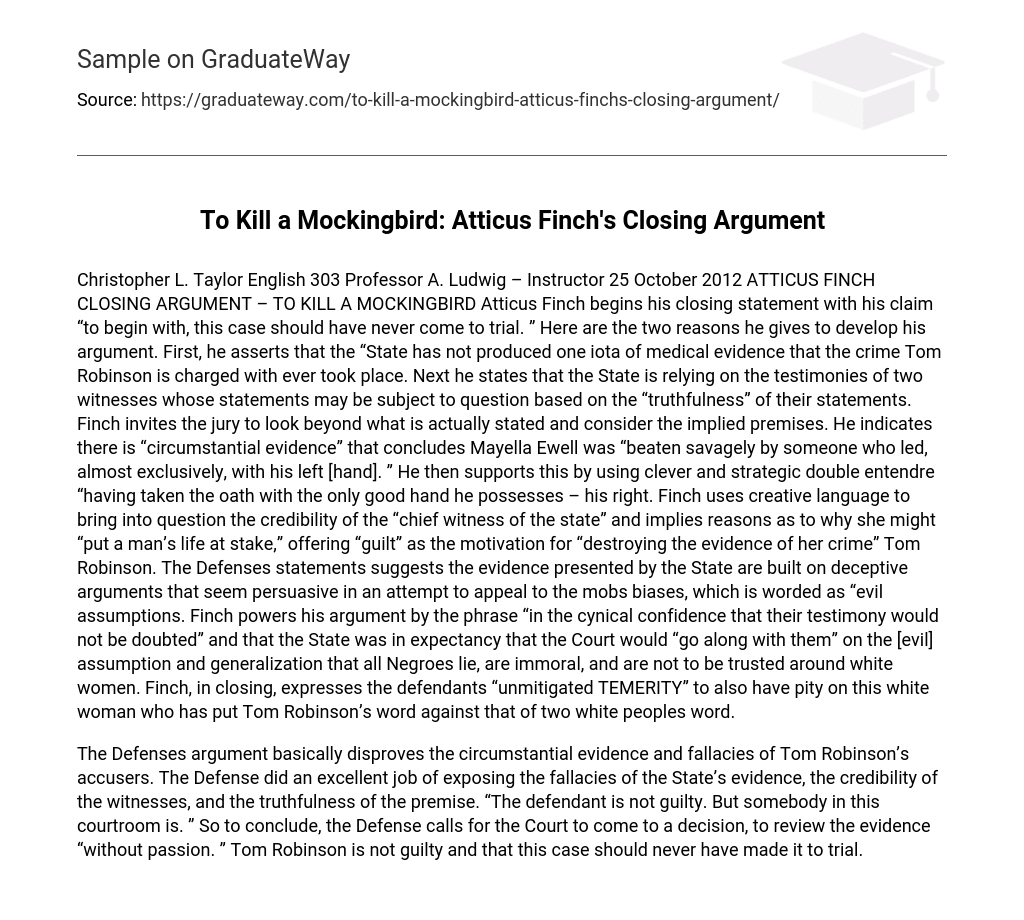Atticus Finch begins his closing statement with his claim “to begin with, this case should have never come to trial. ” Here are the two reasons he gives to develop his argument. First, he asserts that the “State has not produced one iota of medical evidence that the crime Tom Robinson is charged with ever took place. Next he states that the State is relying on the testimonies of two witnesses whose statements may be subject to question based on the “truthfulness” of their statements.
Finch invites the jury to look beyond what is actually stated and consider the implied premises. He indicates there is “circumstantial evidence” that concludes Mayella Ewell was “beaten savagely by someone who led, almost exclusively, with his left [hand]. ” He then supports this by using clever and strategic double entendre “having taken the oath with the only good hand he possesses – his right. Finch uses creative language to bring into question the credibility of the “chief witness of the state” and implies reasons as to why she might “put a man’s life at stake,” offering “guilt” as the motivation for “destroying the evidence of her crime” Tom Robinson.
The Defenses statements suggests the evidence presented by the State are built on deceptive arguments that seem persuasive in an attempt to appeal to the mobs biases, which is worded as “evil assumptions. Finch powers his argument by the phrase “in the cynical confidence that their testimony would not be doubted” and that the State was in expectancy that the Court would “go along with them” on the [evil] assumption and generalization that all Negroes lie, are immoral, and are not to be trusted around white women. Finch, in closing, expresses the defendants “unmitigated TEMERITY” to also have pity on this white woman who has put Tom Robinson’s word against that of two white peoples word.
The Defenses argument basically disproves the circumstantial evidence and fallacies of Tom Robinson’s accusers. The Defense did an excellent job of exposing the fallacies of the State’s evidence, the credibility of the witnesses, and the truthfulness of the premise. “The defendant is not guilty. But somebody in this courtroom is. ” So to conclude, the Defense calls for the Court to come to a decision, to review the evidence “without passion. ” Tom Robinson is not guilty and that this case should never have made it to trial.





